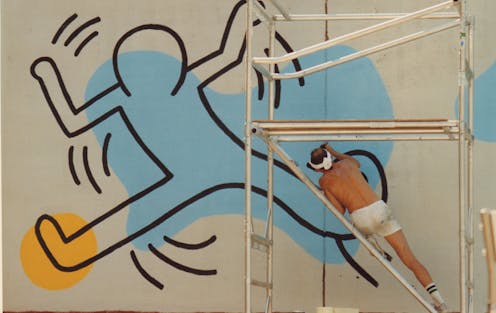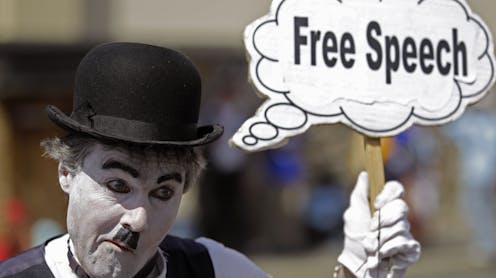Ten things you need to know to prepare for the Anzac centenary
 A guide to help you shake out some enduring Anzac myths.State Library of South Australia, CC BY-NC
A guide to help you shake out some enduring Anzac myths.State Library of South Australia, CC BY-NCThe centenary of the Great War has begun. Now, as we move towards the centenary of the Gallipoli landings on April 25 2015 we are gearing up for an extravaganza of Anzac-ery. The combined processes of official meddling, hype and community sentiment are already at work.
 The ships of the first convoy left Albany a century ago this weekend.yaruman5/Flickr
The ships of the first convoy left Albany a century ago this weekend.yaruman5/Flickr
This weekend thousands of people will flock to the Western Australian town of Albany. The town was the last sight many young soldiers had of Australia before sailing to fight at Gallipoli. A convoy carrying more than 30,000 young men left Albany on November 1 1914.
The centenary of this departure has already generated something of a media frenzy – and more than 60,000 spectators are expected this weekend.
Readers may find this short list useful in retaining a grip on reality as the media storm begins to swirl around us.
1. Anzac is intensely connected with its origins at the Gallipoli landings and subsequent Australian experiences in the first world war, and in conflicts since.
Despite the efforts of several prime ministers to direct our national gaze away from Gallipoli and towards the Western Front, or the fall of Singapore, the events at Gallipoli between April 25 and December 20, 1915 will remain the foundation of the Anzac tradition.
This points to the way in which precedence works in myth making. First, last, worst and the like have immense popular appeal and will be mercilessly exploited by all media. Subsequent conflicts, no matter how horrific or significant, only add greater lustre to the foundational event rather than displacing it.
 A soldier with a periscope rifle at Gallipoli, 1915.Ellen Thompson/Flickr
A soldier with a periscope rifle at Gallipoli, 1915.Ellen Thompson/Flickr
2. The military events that originated Anzac, and those that have since nurtured it, occurred mostly outside Australia.
This peculiarity of a national wartime experience is a fundamental reason why Anzac has been perpetuated. The emotional effect of the nation’s war dead lying elsewhere produces reverential pilgrimages, an annual spectacle and a massive national shrine. These all aim to compensate for the imperceptible but aching hollowness at the centre of the tradition.
Anzac is iconically represented through the stereotype of the digger, initially the volunteer civilian foot soldier of the first world war.
Warrior heroes are found across time and space. In the modern era these have tended to become idealised types, such as the French poilu or the British tommy. The Australian equivalent is the digger, whose image was based on the volunteer civilian foot soldier of the first AIF. Since then, the term has come to apply to all Australian military personnel.
Whether in the past or the present, the digger is portrayed as a fierce but fair fighter, distrustful of military authority, inclined to larrikinism and, generally, a kind of improbable rough diamond. The extent to which this venerable but persistent image has become a burden for the modern professional soldier has recently been expressed.
This will make no difference to the ongoing appeal of the digger for the broader Australian community because Anzac has always been a popular national as well as a military tradition.
 Anzac Cove, 1915.State Library of South Australia/Flickr
Anzac Cove, 1915.State Library of South Australia/Flickr
3. Although a secular concept, Anzac has strong overtones of the sacred.
Anzac is a cultural space in which otherwise awkward religious as well as emotional expressions are temporarily allowed. There are sacred (mostly but not solely Christian) elements at Anzac Day events, in the Australian War Memorial’s role as a national shrine and in memorial services in churches and other religious buildings around the country.
But Anzac Day, like the national community that maintains it, otherwise refuses the public religious effusions favoured by many other nations in commemorating their war dead.
4. For all of its existence, Anzac has been deployed, manipulated, interrogated, attacked and defended by political, military, cultural and vested interests of all kinds.
A far from comprehensive list includes returned soldiers, their families, friends and community affiliations, the military, federal and state politicians and historians. While the federal and some state governments were initially slow to appreciate the community power of Anzac, by about 1919 the message had been embedded and we have never heard the end of it.
5. Anzac has gone in and out of fashion as public sentiment has waxed and waned.
A truism has developed about the decline of Anzac from the late 1960s and into the early 1980s. Recent research suggests that while numbers participating in and viewing official marches and parades on April 25 fell away during this time, attendances at dawn services may not have declined to the same extent.
This may be because people were reluctant to participate in the official, strongly militaristic display of Anzac, while the less formal “dawn service” retained much of its community appeal.
This thesis remains to be tested but the same research also indicates some volatility in Anzac Day attendances between and during wars.
 Anzac Day event, 2014.Lloyd/Flickr
Anzac Day event, 2014.Lloyd/Flickr
6. Its alphabetical representation is passionately contested – is it ANZAC or Anzac?
This apparent pedantry is another indicator of the emotional significance of the word and the concept. The original term was a telegraphic address for the Australian and New Zealand Army Corps – ANZAC. When the term passed into popular parlance, as it did fairly quickly, it became a proper noun. So Anzac is the correct form to use unless referring specifically to the original telegraphic address. Others will passionately argue that this is not so and that ANZAC is the appropriate rendering.
7. Anzac has always been controversial.
We have been fighting over the significance, value and ownership of Anzac from its earliest development. The organisation currently known as the Returned and Services League (RSL) made an early claim on ownership. But there are many more, including the federal government and the army.
Other conflicts have included whether or not businesses should be allowed to open and whether it is appropriate to play sports on Anzac Day. And there have always been controversies over the message of April 25 – does it glorify war and militarism or does it commemorate the sacrifices of the dead?
Of course it does both – and more - depending from where you view it.
8. The NZ in Anzac is almost always forgotten in Australia.
Kiwis have long been resigned to this historical memory lapse. It would certainly be notable if we could get the balance right in the centennial celebrations and commemorations.
9. Anzac Day is both a commemoration and a celebration.
The need for commemoration of the war dead has always been matched by the need to celebrate the “birth of a nation”.
From its inception, Anzac Day featured mourning and festivity in the somber morning observances followed by drinking, eating and two-up playing in the afternoon and evening.
While “two-up” playing is possibly in decline, Anzac Day afternoons are nowadays characterised by sporting fixtures and frequent partying.
10. And one more thing …
Like Ned Kelly and Waltzing Matilda, Anzac is never going away, no matter how much some might wish it would.
Graham Seal receives funding from the Australian Research Council. He is affiliated with Honest History.
Read more http://theconversation.com/ten-things-you-need-to-know-to-prepare-for-the-anzac-centenary-29828
















